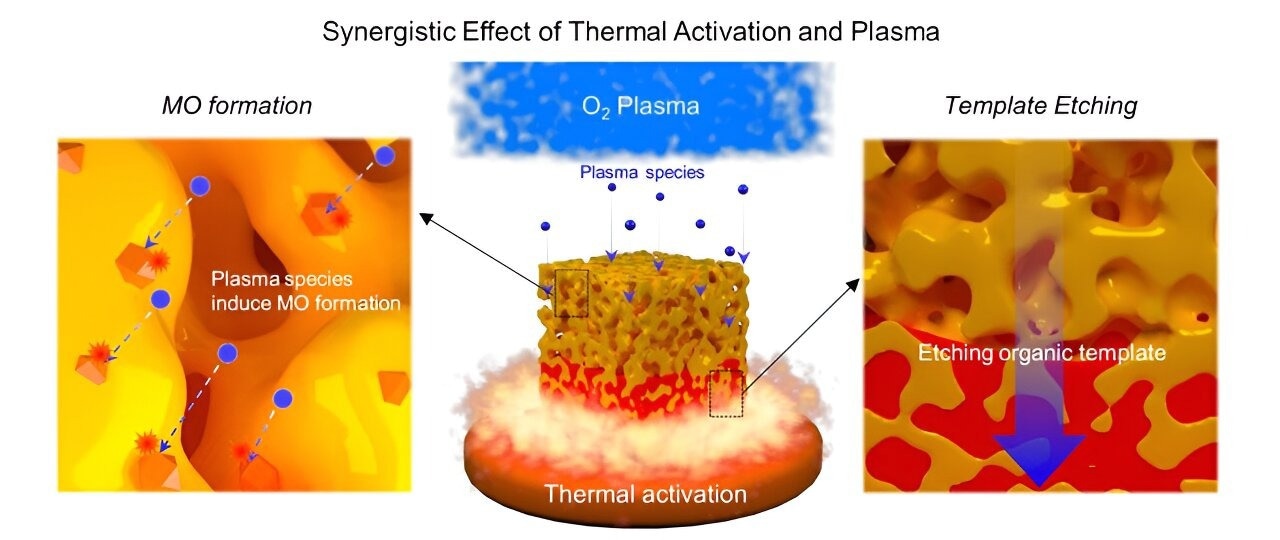Imagine having the ability to wear the smartphone on the wrist, not in the form of a watch, but rather as a flexible band that wraps around the arm. Additionally, picture clothing can charge the gadgets simply by wearing them.

Synergistic effect of thermal activation and plasma. Credit: POSTECH
The realization of this dream has recently been aided by a cooperative team comprising Professors Jin Kon Kim and Dr. Keon-Woo Kim of Pohang University of Science and Technology (POSTECH), Taesung Kim and M.S./Ph.D. Candidate Hyunho Seok of Sungkyunkwan University (SKKU), and Hong Chul Moon of the University of Seoul (UOS). The study was published in Advanced Materials.
The pores in mesoporous metal oxides (MMOs) range in size from 2 to 50 nm. MMOs have a wide range of uses because of their large surface area, including semiconductors, sensors, efficient catalysis, and high-performance energy storage. The integration of MMOs into flexible and wearable devices is still very difficult, though, as plastic substrates cannot withstand temperatures of 350 °C or higher, which is the temperature at which MMOs can be synthesized.
To address this issue, the research team synthesized a variety of MMOs on flexible materials at much lower temperatures (150–200 °C), including vanadium oxide (V2O5), well-known high-performance energy storage materials, V6O13, TiO2, Nb2O5, and WO3.
Enough energy is provided by the highly reactive plasma chemical moieties to offset the effects of high temperature. The manufactured devices' ability to store energy could be bent thousands of times without compromising functionality.
We’re on the brink of a revolution in wearable tech. Our breakthrough could lead to gadgets that are not only more flexible but also much more adaptable to our daily needs.
Jin Kon Kim, Professor and Lead Researcher, Pohang University of Science and Technology
The Nano & Material Technology Development Program, the Basic Research in Science & Engineering Program, and the National Creative Initiative Research Program provided funding for this study.
Journal Reference:
Kim, K., et al. (2024) Low-Temperature, Universal Synthetic Route for Mesoporous Metal Oxides by Exploiting Synergistic Effect of Thermal Activation and Plasma. Advanced Materials. doi.org/10.1002/adma.202311809
Source: https://international.postech.ac.kr/